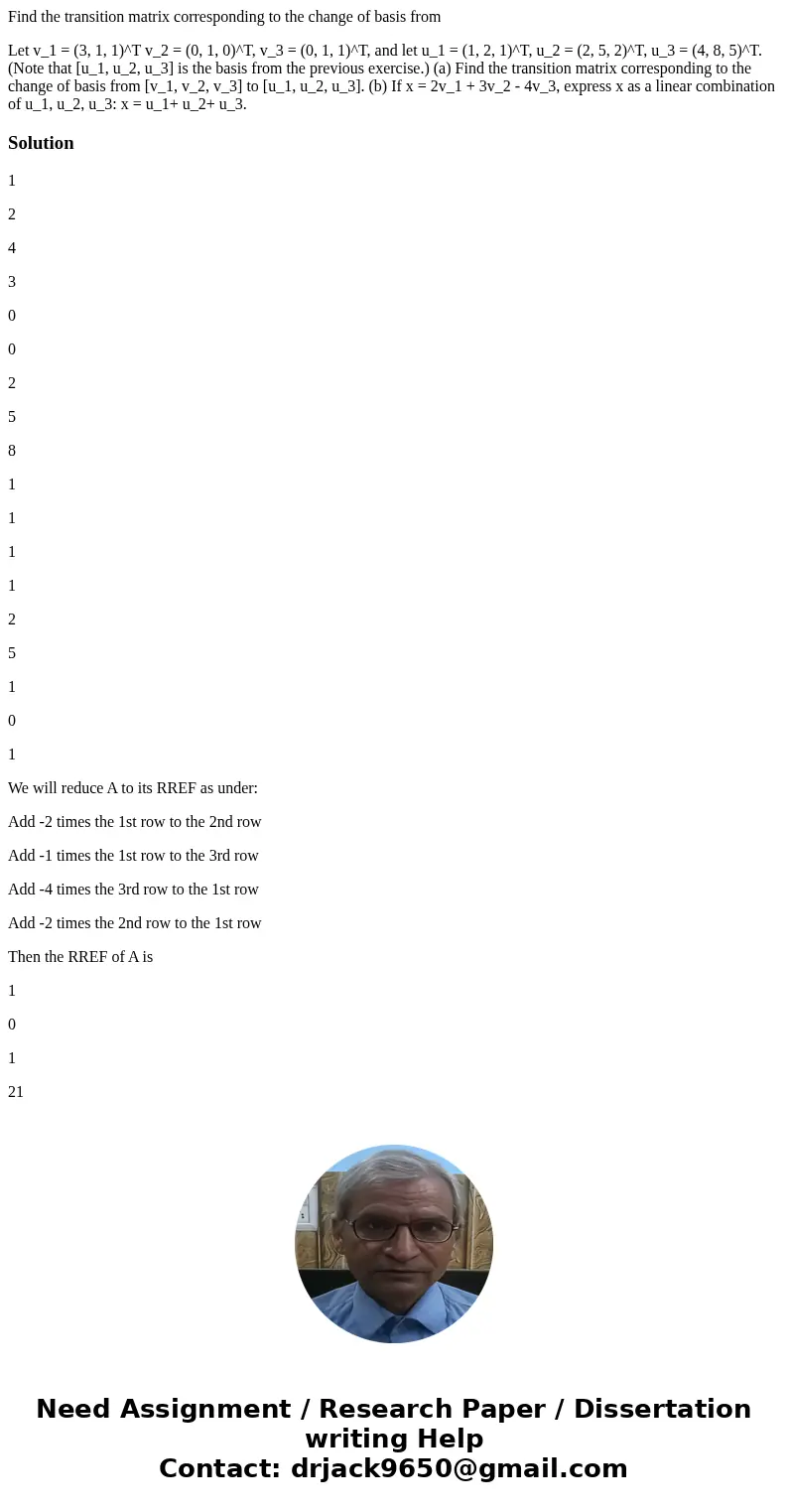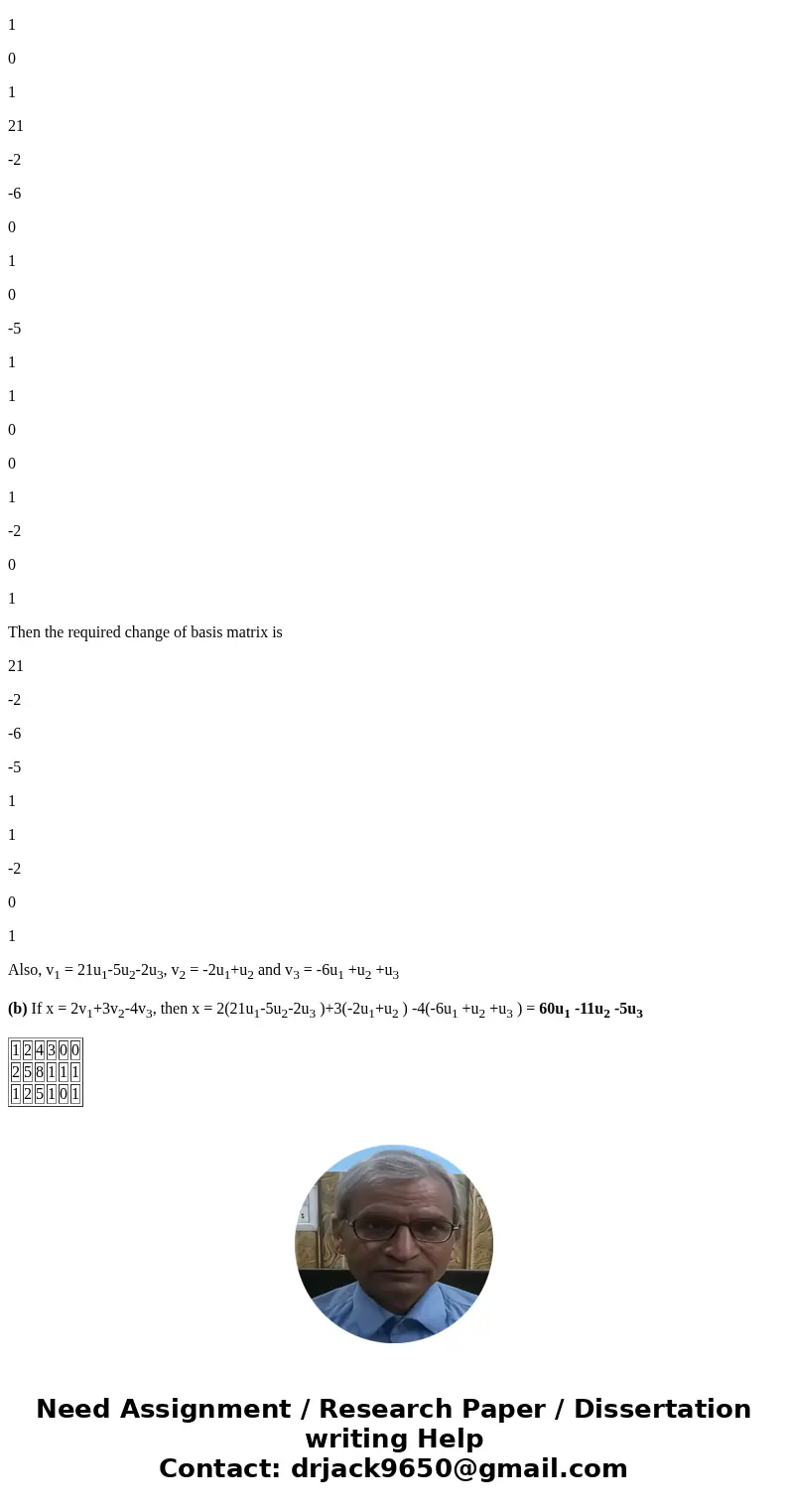Find the transition matrix corresponding to the change of ba
Find the transition matrix corresponding to the change of basis from
Let v_1 = (3, 1, 1)^T v_2 = (0, 1, 0)^T, v_3 = (0, 1, 1)^T, and let u_1 = (1, 2, 1)^T, u_2 = (2, 5, 2)^T, u_3 = (4, 8, 5)^T. (Note that [u_1, u_2, u_3] is the basis from the previous exercise.) (a) Find the transition matrix corresponding to the change of basis from [v_1, v_2, v_3] to [u_1, u_2, u_3]. (b) If x = 2v_1 + 3v_2 - 4v_3, express x as a linear combination of u_1, u_2, u_3: x = u_1+ u_2+ u_3.Solution
1
2
4
3
0
0
2
5
8
1
1
1
1
2
5
1
0
1
We will reduce A to its RREF as under:
Add -2 times the 1st row to the 2nd row
Add -1 times the 1st row to the 3rd row
Add -4 times the 3rd row to the 1st row
Add -2 times the 2nd row to the 1st row
Then the RREF of A is
1
0
1
21
-2
-6
0
1
0
-5
1
1
0
0
1
-2
0
1
Then the required change of basis matrix is
21
-2
-6
-5
1
1
-2
0
1
Also, v1 = 21u1-5u2-2u3, v2 = -2u1+u2 and v3 = -6u1 +u2 +u3
(b) If x = 2v1+3v2-4v3, then x = 2(21u1-5u2-2u3 )+3(-2u1+u2 ) -4(-6u1 +u2 +u3 ) = 60u1 -11u2 -5u3
| 1 | 2 | 4 | 3 | 0 | 0 |
| 2 | 5 | 8 | 1 | 1 | 1 |
| 1 | 2 | 5 | 1 | 0 | 1 |


 Homework Sourse
Homework Sourse